Couch Lab: A Son’s Gift of Innovation Honors a Father’s Vision
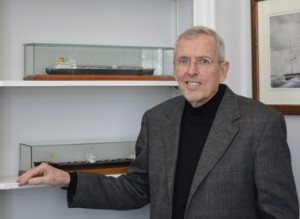 One of the most innovative gifts Webb Institute has ever received started with a vision—and some conversations.
One of the most innovative gifts Webb Institute has ever received started with a vision—and some conversations.
In 2007, Dr. John C. Couch began discussions with institutional leadership regarding Webb Institute’s need to provide its students with state-of-the-art computer technology. These conversations, along with Dr. Couch’s vision of students utilizing technology with enhanced processing power and graphic display capacity to run industry-leading design software, led to an extraordinary innovation at Webb.
In 2007, a $500,000 gift from Dr. Couch launched the Richard B. Couch ’33 Ship Design and Enhanced Classrooms fund, creating what would be known as the “Couch Lab.” Established in memory of Dr. Couch’s father, who graduated from Webb in 1933 and went on to a career as an esteemed professor of naval architecture at the University of Michigan, this gift provided the initial capital to create the Richard B. Couch ’33 Laboratory and to enhance technology in the classrooms. Currently the fund is used to support operating and maintenance costs for the lab and classrooms, and to help defray the cost of various design software programs for students.
Since its inception the fund has proven to be a key source of funding that has enabled Webb Institute to upgrade its computer processing capacity for the entire campus community. It has also given students state-of-the-art technology in the classroom, with the hardware and software necessary to fully utilize industry-leading design programs. This kind of access to first-rate technology, combined with real-world work experience gives Webb graduates a huge head start in their careers.
The “Couch Lab” plays an instrumental role in Webb’s curriculum. The lab is used by students for collaborative study space to work on design projects. Several theses have taken advantage of the lab’s parallel processing capabilities, which significantly reduce the time required for advanced CFD (Computational Fluid Dynamics) and FEM (Finite Element Method) analyses.
Classroom upgrades, specifically the acquisition and implementation of large-screen monitors, have allowed students to utilize more fully relevant software, including cutting-edge design programs. In the ever-changing world of technology, what seemed like a luxury a few years ago has become a necessity as Webb strives to maintain its leadership role as a premier institution of naval architecture and marine engineering.
Recently, Dr. Couch has agreed to increase his commitment to the Richard B. Couch ’33 Ship Design and Enhanced Classrooms fund by an additional $500,000. This new commitment will be a vital building block in the upcoming Capital Campaign. According to President Keith Michel, “John’s leadership role as a volunteer and donor is evidence of his belief in Webb’s mission and vision moving forward.”
Today Dr. John C. Couch serves on Webb Institute’s Board of Trustees as chair of the Investment Committee. He resides in Menlo Park, California.
A Short Message to Webb students- Past, Present, and Future.
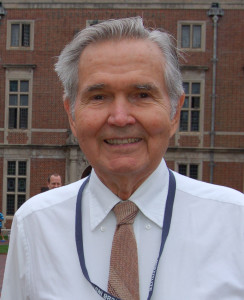 I entered Webb in 1941 as a member of the Class of ’45, but graduated in 1944 due to a speeded schedule during WWII ..
I entered Webb in 1941 as a member of the Class of ’45, but graduated in 1944 due to a speeded schedule during WWII ..
In 1944, I signed a pledge to give Webb $25/yr for 20 years (more than $300/yr in today’s dollars). While the pledge was voluntary, I think the years the amount of contributions increased.
I would like to tell you how my wife and I are supporting Webb now for what Webb has meant to our family. Your family might do something very different. Do what is right for both Webb and your family.
Recently I made Webb beneficiary of an insurance policy taken out at Webb during WWII. My family was the original beneficiary of the insurance policy but they supported the change recognizing the contribution Webb made to the whole family through my education. My wife, Ruth, and I have made Webb a beneficiary in our wills.
Webb graduates are all part of a unique Community sharing the integrity, work-ethic and friendships developed at Webb. The Webb Community has served me well since 1941.
Webb deserves the-joyful financial support of all graduates. The future of Webb depends upon it.
– Edmund Theophilus Klemmer
Meet Our Heritage Society Members
The Two Youngest Members Speak Out
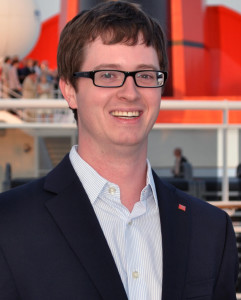 Let’s get a few things cleared up: No, I’m not from the Class of 1911. Yes, my classmate Brent Morrison and I might be two of the youngest members of the Heritage Society, and no, it’s not too early to think about the macabre, but I don’t look at it that way.
Let’s get a few things cleared up: No, I’m not from the Class of 1911. Yes, my classmate Brent Morrison and I might be two of the youngest members of the Heritage Society, and no, it’s not too early to think about the macabre, but I don’t look at it that way.
I like to think that Webb found me through an alumnus in a providential encounter near my hometown in Kingsland, Georgia. As soon as I heard about the campus on the Sound, the intimate class size, and the incredible family-like support while studying naval architecture and marine engineering, I was sold. The campus visit in the fall of 2006 cemented my belief that my college pursuit was Webb or bust.
After four long but incredible years and a great career opportunity born through a Webb Winter Work experience, I found myself filing paperwork for my employer-sponsored life insurance plan. When it came time to name a beneficiary, I named Webb. I knew when I graduated that I wanted to give back to Webb annually, and I aspired to continue that in perpetuity like some of the benefactors I met as a student. That simple paperwork exercise in my first week of a real job set that plan in motion, and I was suddenly a member of the Heritage Society.
Will that policy be my final bequest to Webb? Probably not. The important thing was to get in the habit of thinking about Webb when talking about my priorities after death. The reality of estate planning hit very close to home when my father died unexpectedly in a car accident. He was young–in his 50’s–and the proper legal instruments were not in place. As a result, my mother and I navigated some difficult challenges to settle the estate. After that experience, I was further convinced to sort out my own priorities in writing, including a perpetual gift to Webb.
It’s not easy for someone in his 20’s to talk about mortality, but I strongly believe more of us should consider stepping up early to leave a perpetual gift to Webb. Having a plan in place, even if it changes over time, can make a difficult time for loved ones just a little bit easier.
The Two Youngest Members Speak Out
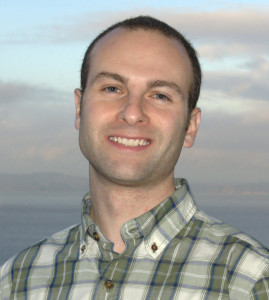 Webb was the only place I wanted to go. I loved naval architecture, New York, and studying. Free tuition was compelling because I had already taken an expensive degree. I often marvel at how lucky I’ve been to get into Webb, to make great friends there, to make it through the program, and to land the dream job at Glosten that I have today.
Webb was the only place I wanted to go. I loved naval architecture, New York, and studying. Free tuition was compelling because I had already taken an expensive degree. I often marvel at how lucky I’ve been to get into Webb, to make great friends there, to make it through the program, and to land the dream job at Glosten that I have today.
I joined the Heritage Society in 2014 as part of a long-overdue financial makeover. It was spurred in part by the death of a relative and the role that I took in settling her estate. I realized that if I died suddenly, I’d leave behind a mess that didn’t represent my priorities. I made several changes to address my goals and my tolerance for risk.
In terms of managing risk, I want to give aggressively to Webb annually because the money is needed and my gifts are generously matched by Glosten. But I also need to save for all the good and bad events that might happen in my life. By including Webb in my estate plan, I can give sensibly now while ensuring that Webb will get some of the money that I don’t end up spending on life’s good and bad surprises. That’s my impression of what the Townes did, and I admire them deeply for that.
In terms of reaching goals, I’d like to see Webb continue to offer the best degree in the business, for free, in modern facilities in Glen Cove, while drawing sustainably on its endowment. We can’t reach that goal without alumni making both annual and planned gifts.
It’s so important for young alumni to be proactive about financial planning, because a little bit of effort now could make a difference of millions of dollars by the time they retire. Estate planning is an integral part of financial planning. Why put it off? It was really fun to think about how much I could do for others with the resources that I might not need in my lifetime.
Repaying Webb’s Investment
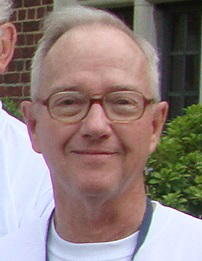 Looking back at the 60 years since I graduated with the Class of 1955 is a testament to how much Webb influenced my life. My classmates and other graduates are among my best friends. Webb graduates opened up many opportunities I might not have had otherwise.
Looking back at the 60 years since I graduated with the Class of 1955 is a testament to how much Webb influenced my life. My classmates and other graduates are among my best friends. Webb graduates opened up many opportunities I might not have had otherwise.
Design – and ship design in particular – fascinated me, and I followed those interests throughout my career. In 1955 there were three general categories of job opportunities available, which were to join the military, to work for a defense contractor, or to be drafted. I joined the Naval Reserve, and over a period of 31 years on active and inactive duty I learned how the Navy does ship operation, design, R&D, maintenance, and education. My last assignment was as the Technical Director for the Naval Reserve Engineering School, and I retired with the rank of Captain. My military service became very useful when merchant ship design work declined and many shipyards closed. My career included working for three shipyards, two R&D companies, and one design office. With all those job changes it was critical that I provide my own funds for my retirement.
Some years ago, when my future seemed secure, I decided that it would be a worthwhile goal to repay Webb’s investment in me. To determine how I was doing, I calculated my annual contribution as a percentage of Webb’s cost of operation per student for each year. The sum of those percentages is an estimate of the number of years of Webb education I had paid back to the Institute. Although I made a donation each year, I was dismayed to find how little I had repaid. Having already retired, I realized that I would never reach my goal through my annual contributions. After considering the many ways to make a planned gift to Webb, I opted to include a bequest in my will. During my retirement of 23 years, my wife and I have traveled by motor home through 49 states, Canada and Mexico. We are now permanently moored for medical reasons. For those who can, I recommend working on your bucket list while you are able!
Leading the Call for Planned Giving
John A. Malone ’71 has been a member of the Heritage Society since 2008 when he notified the Webb Development Office that he and his wife Amy had named Webb as a beneficiary of the family trust that they created in 2001. John is highlighted here because of his long history of “giving back” to Webb in both time and financial support – most recently taking leadership of Webb’s initiative to increase membership in the Heritage Society, i.e., those who have made a provision for Webb in their estate plans.
Like many Webbies, John’s coming to Webb was a story of serendipity. He had decided to study engineering in college, was introduced to the field of naval architecture and marine engineering by a next-door neighbor who ran a company that provided babbitt metal to the marine industry, and then found Webb through a high school guidance counselor. He also applied and was accepted by Cooper Union and the U.S. Merchant Marine Academy, but Webb was always his first choice because of Webb’s preeminent reputation in the field and the academic challenge that it presented. His parents were of modest means, and he knew from the get-go that without a full-tuition scholarship he’d be facing a mountain of college loan debt upon graduation. The thought of making such a unique opportunity available for future generations of deserving students has been a life-long inspiration.
John’s appreciation for his Webb education has grown throughout his 42-year career in the marine field—a career that has included achievements in ship design, shipbuilding, and research and development. During that time, Webbies have always been at the top of John’s “go to” list for career guidance, mentoring, and technical expertise in specialty disciplines. He has never been disappointed hiring Webb interns or graduates, most of whom have gone on to great career accomplishments. His wife, Amy, often says she’s never met a Webbie she didn’t like, and over their 37 year marriage John has introduced her to a lot of Webbies! John’s employers have included two major U.S. shipyards and four engineering firms, and he’s been working for the past 13 years as an independent consultant.
As he approaches retirement, he’s been consulting less and volunteering more, serving on Webb’s Board and its Executive, Development and Nominating Committees, the Webb Alumni Association Executive Committee, ASNE Scholarship Committee, Chair of SNAME’s Fellows Committee, and Vice Chair of the NSRP’s Ship Design & Material Technologies Panel. He has held every office of the Webb Alumni Association, serving as President from 1992–94, and Webb Alumni Fund (WAF) Chairman from 1997 to the present. He was presented the W. Selkirk Owen Award in 2003. Squeezed into an always busy schedule, John and Amy manage to spend a few weeks in Hawaii each spring, and try to travel to “someplace different” each year, such as their recent tour of Turkey and a Greek island cruise. They also enjoy the performing arts, their cat Noodle, and entertaining Webb students on internships in the San Diego area.
Of his new role in promoting planned gifts to Webb, John says he’s been the Alumni Fund Chairman for so long that alums think he’ll be “picking their pockets” until the day they die… but now that’s no longer a limiting event! Seriously, John and Amy are leading, by example, by arranging to endow their annual contribution in perpetuity through an estate gift. John looks forward to sharing this and other planned giving ideas with many alums over the coming years.
A Webbie Who Has Truly “Given Back”
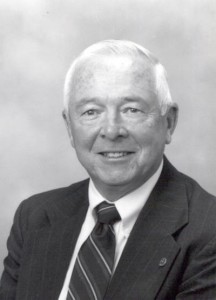 Lincoln D. Cathers ’56 has been a member of the Heritage Society since 1989, when he made a bequest to Webb Institute. Mr. Cathers has also been recognized for his lifetime giving to Webb. In 2010, he received the WebbEY award for 50 years of consecutive giving. He is being spotlighted here not only for his generosity but for his extensive commitment of service and dedication to Webb.
Lincoln D. Cathers ’56 has been a member of the Heritage Society since 1989, when he made a bequest to Webb Institute. Mr. Cathers has also been recognized for his lifetime giving to Webb. In 2010, he received the WebbEY award for 50 years of consecutive giving. He is being spotlighted here not only for his generosity but for his extensive commitment of service and dedication to Webb.
Since his graduation, he has proven to be one of the most dedicated alumni, volunteering on many different levels. He is a Life Member of the WAA and was president of the Alumni Association during Webb’s 100th year anniversary. He is also a past trustee and in 2009 was awarded the distinguished William Selkirk Owen Award. He served as the Washington D.C. alumni representative for many years, planning their big annual gatherings.
Mr. Cathers was very instrumental in helping Webb develop and initiate its Planned Giving Program. He additionally volunteered his time to write numerous articles for Webb News explaining the variety of ways other alumni have included Webb in their estate planning.
In 1949, Lincoln first came to know Webb through his high achievements in the Boy Scouts of America, which initially cemented his desire to attend Webb. He decided to attend Webb after reading an article in the Saturday Evening Post, where Webb was said to be a better school than Princeton. He saw Webb as a real challenge and it seemed to be a good fit since he always wanted to be an engineer.
As a student, Lincoln was very inspired by the Webb Honor Code and his participation in Student Government, they were both very strong elements of the Webb experience. His favorite professor at Webb was Humanities Professor Woody Long, whose economics and public speaking classes he really enjoyed.
After leaving Webb in 1956, Lincoln attended George Washington University, where he pursued a J.D. Degree. He had an exciting career working as a naval architect for the Department of the Navy. His diverse career assignments included two Presidential Commissions, design and development of the two rescue subs built in the aftermath of the USS Thresher (SSN593) on sea trials in 1963. His career also included several years in the Polaris Program and as design manager of USS Seawolf (SSN-21) during its preliminary and contract design. For this effort he was awarded the Navy’s Superior Civilian Service Award.
Lincoln and his wife Nancy reside in Queensbury, N.Y. Together they raised four daughters (Caren, Jennifer, Courtney and Lynsey) and they also have 10 grandchildren ranging in ages 10–20. One is currently a senior at the University of Maryland and three others will be entering college in the fall of 2013, with one who recently received a full Air Force ROTC scholarship to Duke University.
Throughout the years, Lincoln devoted a lot of his time to the Boy Scouts and the Glens Falls Rotary Club. He was awarded an Eagle Scout at 14 and represented Region 2 (New York and New Jersey) in 1949 where he met President Truman. In 2004, he was awarded the Silver Beaver by the Boy Scouts (the highest award one can attain at the Council Level). Lincoln also served as president of 156 member Glens Falls Rotary Club, was recognized as Club Rotarian of the Year in 2006 and District Rotarian of the Year in 2004.
During his lifetime, Lincoln has almost 50 years of vacationing with his family at Lake George. He and his wife Nancy and four daughters are currently building a new “Camp Cathers,” tearing down the 70-year old summer home and replacing it with a much larger year-round home, in order to accommodate their growing family and provide them with a place to gather in the future.
Lincoln passed away on Saturday, June 1st, 2013. We’ve lost a devoted member of the Webb community and he will be missed by all who knew him.


